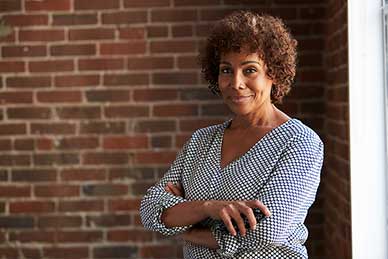There are many more active sex hormones in the female body than many people realize. Of course, estrogen is the main female sex hormone, but women also need a certain amount of testosterone for optimum health; in fact, there are four distinct types of estrogen as well as five different kinds of testosterone. Other female sex hormones include progesterone, luteinizing hormone, follicle-stimulating hormone and gonadotropin-releasing hormone.
Hormones Control Important Body Functions
Women rely on all of these sex hormones for the proper functioning of their reproductive systems, including fertility and sexual desire. However, many of these hormones also play important roles in non-sexual functions of the body. For example, proper estrogen balance is important for bone health, so estrogen deficiency can cause serious conditions like osteoporosis.
It’s possible to divide a woman’s life into three stages, divided by the unique hormonal signature of each phase. These stages are puberty, reproductive age and menopause. Under normal circumstances, the human body knows how to optimize hormone balance for each of these stages. Unfortunately, many aspects of the modern world can interfere, resulting in hormone imbalance.
The First Stage: Puberty
 For girls, puberty normally starts between the ages of 10 and 14. This stage of life is characterized by an increase in sex hormone production. In pubertal girls, estrogen is responsible for growth spurts, breast development, changes in body fat distribution and the beginning of the menstrual period.
For girls, puberty normally starts between the ages of 10 and 14. This stage of life is characterized by an increase in sex hormone production. In pubertal girls, estrogen is responsible for growth spurts, breast development, changes in body fat distribution and the beginning of the menstrual period.
If the adolescent girl’s body does not produce enough estrogen, she may suffer from stunted growth or a delayed period. There is also an epidemic of excess estrogen in adolescents, reflected in the fact that young girls have been starting their periods at younger and younger ages over the past few decades.
The Second Stage: Reproduction
Proper hormone balance remains crucial as a woman comes into her reproductive age. If she wants to start a family, she must have the right levels of each hormone in order to be fertile.
Both too-high and too-low estrogen levels can interfere with period regularity and ovulation. Even if a woman is not currently trying to conceive a child, hormone balance is still important. Excessive estrogen can cause weight gain, increased PMS symptoms and fibrocystic breasts, while estrogen deficiency can cause urinary tract infections. Either type of imbalance can produce side effects like a headache, fatigue, low sex drive and insomnia.
Other types of hormones are equally important for a woman of reproductive age. Excess testosterone can cause polycystic ovary syndrome, which in turn can cause infertility, excess body and facial hair, acne, insulin resistance and more.
The Third Stage: Menopause
 Menopause and postmenopause is the last of the three stages of a woman’s life. Estrogen levels drop as you get older, which makes your periods less and less frequent. Eventually, when you have not had a period for one year, you have officially reached menopause.
Menopause and postmenopause is the last of the three stages of a woman’s life. Estrogen levels drop as you get older, which makes your periods less and less frequent. Eventually, when you have not had a period for one year, you have officially reached menopause.
This decline in estrogen is accompanied by many side effects. Your vagina may become dry and less elastic, increasing the risk of pain, infection and irritation. Physical symptoms include hot flashes, headaches, decreased sex drive and bone density loss. Psychological effects can include mood swings, insomnia and mental fog.
These symptoms can be unpleasant, but ultimately this age-related drop in estrogen is perfectly normal. Up to 80 percent of older women do not experience menopause as a negative thing. Nevertheless, menopause symptoms can be much worse if you suffer from an abnormal hormone imbalance on top of the normal menopausal changes. Most women find that addressing hormonal imbalance will relieve symptoms.
How to Balance Hormones Naturally Throughout All Stages of a Woman’s Life
If your hormones are thrown off-kilter, there could be a wide variety of causes, including:
- Xenoestrogens. These are harmful chemicals that act like estrogen in the body. There are many distinct types, found in certain plastics, personal care products and pesticides used on food crops.
- Stress hormone imbalance. Physical and mental stress increase cortisol, the stress hormone. When your body is forced to put cortisol production into overdrive, it has less capacity to produce sex hormones. Alcohol and caffeine are substances that increase cortisol levels.
- Being overweight or obese. Fat tissue is hormonally active—it can secrete more sex hormones than your body can handle.
- Hormonal contraceptive use. Though such medication has its merits, research shows that birth control pills majorly disrupt hormone balance, even many months after cessation of use.

